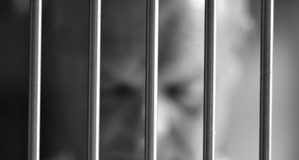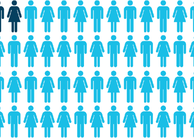Restoring Justice: An Alternative to the School-to-Prison Pipeline
By
2019, Vol. 11 No. 10 | pg. 1/1 The school-to-prison pipeline, a "partnership” between juvenile courts and the school system, "developed through a punitive and harmful framework to the detriment of many vulnerable children and adolescents,” is a phenomenon of the late twentieth century (Mallet, 15). However, juvenile courts and the school system have been historically linked through their focus on controlling young people perceived as troublesome (Mallett, 15). As early as the 1800s and as late as the 1970s, corporal punishment, such as beatings with a ruler, was used by many schools as a normalized method of dealing with students "acting out.” The popularity of corporal punishment was diminished as school populations grew during the 1970s, forcing schools to turn to suspensions and expulsions to keep disruptive students away from classrooms. Over time, these measures were seen as too severe by most of the public. In 1975, Ohio high school students who had been suspended for up to ten days brought a class action against school officials, declaring that their suspension was unconstitutional. The Supreme Court found that the students had been denied due process by being suspended without being given a prior notice or a hearing in Goss v. Lopez. Due to this case, hereafter students suspended for ten days or less would receive an oral or written notice notifying them of the charges against them as well as an explanation of the evidence gathered. However, what seemed a win for the fair treatment of students, precipitated the rise of in-school suspensions as a mode to bypass the due process mandated by the Supreme Court. Despite the use of in-school and out-of-school suspensions and expulsions, the 1970s were characterized by restorative efforts by school administrators when dealing with disruptive students. This approach changed in the 1980s, as schools turned to more punitive methods as a consequence of a variety of factors, three of which are described in this paper: the fears of rising teenage “super-predators,” the 1994 Gun-Free Schools Act, and the establishment of zero-tolerance policies. Because of the complexity of the school-to-prison pipeline phenomenon, solutions to this problem must include the primary stakeholders in school districts: policy makers, community advocates, and school administrators. These groups most come together to replace zero-tolerance policies within a restorative justice framework, one in which students who commit infractions would not be deferred to the juvenile justice system; instead, they would be helped by community and peer groups. Schools would work to establish policies that delineate disciplinary actions and consequences clearly so that students committing minor offenses are not suspended or expelled. In addition, agreements between police officers and school districts must also limit the number of school referrals to the justice system.The fear of rising crimes by youth was fueled by the naming of the problem by prominent figures and the media. In 1995, American political scientist John Dilulio coined the term "super-predator” to mean teenagers, ages 14-l7, who are "radically present-oriented," “self-regarding,” don't fear the stigma of arrest and imprisonment and are feared by maximum security inmates for their cold-bloodedness (Dilulio, 1995). Although Dilulio contended that the rise in crime by juveniles transcended racial boundaries, he argued that black inner-city neighborhoods would beget the more extreme super-predators that would be three times as dangerous as the preceding generation of crime-prone boys. Dilulio’s solution was to fight the “moral poverty” of these teenagers through the federal subsidization of religious institutions (1995). Yet, in the end, Dilulio's solution was passed over by one that appealed to the larger public: incarceration. Just one year after Dilulio’s prediction, there were 8,476 arrests per 100,000 juveniles (Office of Juvenile Justice and Delinquency Prevention, 2017). Just like that, fears of criminal activity led the nation to turn against those who had been traditionally considered vulnerable. Individuals such as Dilulio were not the only one who encouraged and even inflamed public fear. The promulgation of fear could not have been possible without mass media coverage of juvenile crimes. Although the 1999 Columbine shooting was not the first school shooting, it was the most covered because it brought the fear of violence to white, suburban, middle-class backyards (Mallett, 2015). The Columbine shooting also led many parents and school administrators imagine that children needed protection from other children because schools were unsafe. This notion, like the “super-predator” fear, was mostly based on hyperbole, for student-related delinquencies on school grounds and school shooting rates remained low (Mallett, 2015). The consequences of this notion, however, were very real. By 2005, 30% of all public schools would have an armed security guard on school grounds and by 2015 that percentage would increase to 43% (National Center for Education Statistics). Consequently, the school became the place where students went, not to learn, but to be criminalized. Even before John Dilulio named America's juvenile problem, the government had already identified, marked, and punished juveniles as criminals. In 1994, in response to gun violence and drug crimes, the Clinton Administration enacted the Gun-Free School. Under this legislation, states receiving federal had to enact a law that required schools to expel students who brought guns to schools for at least a year and to refer them to the juvenile or adult justice system (Hanson, 2005; Mallet, 2015). In asserting their power to be involved in student discipline, the government ignored questions of due process, and as a result, there was a lack of uniformity in the procedures before the one-year expulsion (Cerrone, 1999). For example, whether a student would receive a notice or a hearing prior to the expulsion was left to the discretion of school districts. The lack of due process provisions meant that not only students’ rights were infringed upon, but they were also made to contend with the justice system. Kathleen Cerrone notes that the Gun-Free School Act may not be a deterrence for the criminally psychotic because these students act with disregard for the consequences their actions might incur. In practice, the Act tended to remove misguided but not criminally-inclined students from school, damaging their self-esteem and their ability to learn. The 1994 Gun-Free School Act, which would lead to increased police presence in schools, was only one of many legislations that would come to be known as zero tolerance policies. Zero-tolerance policies in schools originated from the Reagan Administration’s War on Drugs. In 1986, the War on Drugs permeated school systems with the passage of the Drug Free Schools Act, which prohibited drugs and alcohol possession (Mallett, 2015). Not feeling safe enough, school districts in California, New York, and Kentucky enacted school policies for student expulsion for drug and gang related activity. Zero-tolerance thus came to mean “the application of severe pre-determined consequences for unsafe or unacceptable student behaviors” (Mallett, 2015). To enforce zero tolerance policies in schools, the Clinton Administration enacted the Safe Schools Act of 1994 and 1998. The Acts, largely a response to the school shooting at Westside Middle School, were meant to increase school and police force collaborations in order to improve school and student safety (Mallett, 2015). In pursuit of this goal, the government provided one billion dollars during this time period so that school districts could employ school resource officers (SROs). These officers are not held accountable by the school because they are employed by the local police district and not the school district. It is important to note that zero-tolerance policies are different from microaggressions and subtler forms of discrimination that constantly affect Latino youth. Microaggressions express prejudice against marginalized groups “unconsciously” or “unintentionally” (Merriam-Webster Dictionary). There is nothing unconscious and unintentional about policies implemented to police people of color. Although the number of SROs has increased for all public schools between 2005 and 2016, the data shows that SRO presence increases in proportion with percentage of minority enrollment in schools. In 2016, 20% of schools with a less than 5% combined enrollment of Black, Hispanic. Asian, Pacific Islander, and American Indian/Alaska Native students had fulltime SROs. However, once that enrollment reaches 50% or more, 43% of schools have full-time SROs (National Center for Education Statistics). In 2015, blacks made up 14% of the national juvenile population, but represented 2% of juveniles in residential placement. Whites were 78% of the national population but only represented 31% of those in residential placement. Before zero-tolerance policies were implemented, Latino students had to contend with discrimination from students, teachers, and even administrators. But after the 1990s, Latino students were pushed away from a discriminatory school system into a system that marked them as criminals for their entire life: the juvenile court system. I would argue that, as terrible as discrimination and microaggressions are in school, zero-tolerance policies are worse because they turn Latino victims of discrimination into “rebellious offenders” and also excuse the school system for leaving them behind. Thus, although the school-to-prison pipeline affects almost every school in the US, it affects minority populations to a greater extent because they have been criminalized since the 1990s as super- predators. Latino students have increasingly become very vocal about how the school-to-prison pipeline is fed by mostly brown and black bodies. Desiree Martinez, a first-generation college student at UCLA asks accusingly, “What happens when a child from an inner-city community becomes a victim of institutional oppression? What happens when a child from South Central gets caught in the middle of a gang fight?” (La Comadre). She answers her own question by saying that the media blames the culture of poverty, the student’s upbringing, but never address the fact that many schools are failing the students by making them play catch-up or give up on schooling entirely. Cynthia Lopez, a graduate from University of California, Santa Cruz, reflecting on how she narrowly avoided becoming stuck in an ESL program, also identifies problems with the current educational system. She writes, “Students that aren’t given proper instruction, aren’t given supplies, necessary resources or adequate teachers to help them reach their potential…are forever stuck in the ESL program” (La Comadre). The concerns of Latino students would be best addressed through an open source of communication between schools and themselves. For the remainder of this paper, I will be studying how a restorative justice framework may help address the concerns expressed by Latino students and also help dismantle the school-to-prison pipeline through a case study of Peoria, Illinois Restorative Justice Measures. I have chosen Illinois as my case study for the availability of data and outcome of implementation although restorative justice practices have been implemented in California, Florida, Iowa, Oregon, Maryland, and six other states. Restorative justice is a philosophy that encompasses the following principles: “repairing the harm, stakeholder involvement, and transforming community relationships” (Castillo, 2015). Since 2008, the Peoria County has implemented Peace Circles, Peer Jury, and Community Peace Conferences with the help of the Children's Home Association of Illinois and the Peoria County Juvenile Justice Council (Brown et al., 2010). Data collection efforts in collaboration with the Peoria police revealed that crime was concentrated near Manual High School. Peer juries in Manual High School began with the training of 12 students and the school’s principal and assistant principal on restorative justice philosophies. After, if a student committed a low-level offense, such as electronic usage, they had the option of having their case heard by the peer jurors instead of facing suspension, but only if the student admitted their guilt and took responsibility. Peer jurors only heard cases where the student had already admitted they were guilty because the implementors did not want students to feel like they were being tried at the hands of their peers. Although this is a well-intentioned condition, it may have some negative effects. For example, wrongly accused students who feel like they cannot prove their innocence might be driven to declare themselves guilty and have a peer jury instead of risking suspension or worse. The Peoria school district tries to prevent this scenario and other equally negative ones by coupling peer juries with other restorative measures, such as peace circles, which try to build the bridges of communication between students and teachers so that if a student is wrongfully accused, they will feel empowered to speak up and have a safe space in which to do so. Furthermore, peer jurors mostly heard low-stakes cases, such as disrespect to teachers and unexcused absences, in which the perpetrator was often easily identified, so issues of wrongful accusations were not a concern for implementors and are not mentioned in the Peoria County Transition Update. However, by the end of the 2009 school year peer jurors were increasingly hearing more difficult cases such as truancy and destruction of property, yet they were never left alone; peer juries also consisted of an adult advisor who had close contact with teachers and the Dean of Students. Thus, Manual High tried to prevent unjust profiling of a student as “problematic” by engaging teachers, students, and administrators to reach a holistic conclusion on each high-level case. Peer juries were conducted three times a day so that there would not be long lapse between the time the infraction occurred and the hearing. In the 2009 school year, the peer jurors heard 77 cases, preventing 69 suspensions. To prevent jurors from falling behind due to jury responsibilities, the school mandated that jurors had to maintain good grades and attend class regularly to keep participating in the program. This aspect of restorative justice sought to prevent students from getting referred to the juvenile justice system and therefore limit their contact with police. Peace Circles (PCs) have been implemented at Kiefer School, a private school that serves 130 students who experience special learning problems and/or emotional disturbances. Sixty teachers and staff were trained in peace keeping circles before the 2008 school year. Circles can and are used in a variety of ways. Some teachers teach in a permanent circle formation, while others use circles as a check-in when there is a crisis, or for weekly goal setting (Brown et al., 2010). This restorative justice measure sought to mediate small issues within the classroom by building the pathways of conversation between students and teachers. The Community Peace Conference seeks to reduce crime the likelihood that youth come into contact with the juvenile justice system (Brown et al., 2010). Peace Conference volunteers receive 16 hours of training to prepare them to engage with offenders. Within this system, the offending juveniles have an opportunity to give back to the community they have harmed. Like the peer juries, the Peace Conference is not meant to serve as a trial by community members. To prevent wrongful accusations, the conference members discuss the case by hearing the point of view of victims, youths, and community members. As a group, they also draw out an agreement between victim and offender. Agreements often include an apology to the victim, communitive services, or research projects. A monitor is then assigned to the case to ensure the agreement terms are met by the youth. If the youth is compliant with all clauses, the charges are dropped and if they are not, they are referred to an agent so that the case is formally processed. Thus, the Community Peace Conference builds the bridges of communication between students and community members and diverts students from the Peoria police department. These restorative justice measures do work. In the 2008-09 and 2009-10 school years, teachers using Peace Circles surveyed 209 students on the effect Peace Circles had had in their lives. In 2008, 73% of Latino respondents said that since PCs began, they got along better with their teachers. In 2009, that percentage increased by 3%. This shows that PCs allow students to view their teachers as caring and approachable and less as hostiles meant to send them to the principal's office. For students, having a strong relationship with teachers may mean that they decide to stay in school. Mariela Renteria, a college student, writes,
Her testimony shows the effect teachers have on their students and how a bad comment may alienate students from teachers and the school. PCs have been shown to strengthen the student- teacher relationship. Eighty-two percent of Latino respondents also stated that since PCs began, they came to school more. This shows that Peace Circles are effectively engaging students, something that keeps students in school and which is very important to students. Rocio Rivera-Murillo, a college student, says, “the first Chicana/o Studies course I took helped me feel worthy of being at CSUN; it helped me feel engaged in my education for the first time and I was owning that” (La Comadre). Although Murillo here is talking about the importance of including Ethnic Studies to keep Latino students in schools, I believe that a multicultural curriculum is not enough to combat the school-to-prison pipeline. It is not enough because students are not given a venue to express what they are feeling with the rest of the class, something PCs do, among other things already described. This is why a restorative justice framework will be more effective and more far-reaching than a multicultural curriculum. In addition to enforcing a strong teacher-student relationship, restorative justice practices at Kiefer also led to a decrease in the number of restraints. Qualitative information was gathered for students enrolled pre- and post-PC implementation and it was found that total number of restraints had decreased from 212 in 2007-08 when PCs had yet to be implemented to 141 after PCs were implemented. Kiefer school also used a Behavior Evaluation Scale (BES) to test the students’ behavioral problems. This scale has a globalized score called a quotient, which indicates less trouble when it is higher. The school found that the BES scores increased nearly one whole point for students who were enrolled in PCs. There is less process and intermediate outcome data for peer juries because these are employed at a larger public school. However, peer juries have served their purpose to the extent that they accept cases when they believe adequate and culminate in a meeting with the victim of a student’s infraction. In the 2009-10 school year, 79% of the cases the peer juries oversaw resulted in a meeting between perpetrator and victim and in 21% of the cases there was a written apology to the victim. From these numbers, we can see how peer juries work to restore amicable relations between student perpetrators and victims without resorting to the juvenile justice system when appropriate. Although peer juries, peer circles, and community peace conferences have had a positive impact on the Peoria community and particularly on students, the involved administrators admit that implementation was hard in that coordination and communication between students, teachers, school staff, and parents took time to become effective. The training of teachers and students in restorative justices measures also took time and resources. Nevertheless, the results justify the time and money expenditure on students and their futures. The school-to-prison pipeline is very complex. To understand it, one must recognize that the various societal and political forces that have contributed to its formation. Our own popular media was used to dramatize youth violence in schools and our own citizens turned their backs to young students labeled “super-predators.” The national sentiment that youth crime was on the rise led to the 1994 Gun-Free School, which delivered harsh punishments for students bringing guns to school, and other zero-tolerance policies. Soon enough, large sums of money were being pumped into the educational system, not to better the education of students, but to employ police officers to enforce zero-tolerance policies. Although the school-to-prison pipeline affects almost all students, it affects brown and black students most. Because Latino youth have recognized the ways that the educational system has failed them and have made their voices heard throughout many platforms, it has become increasingly difficulty to ignore the pipeline. A viable solution to the pipeline, as shown by the Peoria, Illinois case, is the implementation of a restorative justice framework. Restorative justice practices include peer juries, peer circles, and community peace conferences that have proven teachers, students, and community members can have effective modes of communication. Further, the use of physical force and behavioral problems have decreased in schools using a restorative justice framework. This is particularly important because the school-to-prison pipeline is fueled by schools who deal with students’ behavioral and mental problems through physical restraint and other punitive measures. The results of restorative justice in Peoria, Illinois schools have shown that students react to engagement by school administrators and staff, and most importantly, that there is a way to combat the school-to-prison pipeline. References"About Us - La Comadre". La Comadre, http://lacomadre.org/about-us/. Accessed 7 Oct 2018. "Definition of Microaggression". Merriam-Webster.Com, https://www.merriam-webster.com/dictionary/microaggression. Accessed 10 Dec 2018. "Goss V. Lopez". L1I / Legal Information Institute, https://www.lavv.comell.edu/supremecourt/text/419/565. Accessed 12 Oct 2018. Brown, L., Snyder, H„ Hurst, H., & Berry, S. (2010). Peoria County Balanced and Restorative Justice: A Transition Update. Pittsburgh: National Center for Juvenile Justice. Castillo, Jennifer. (2015). Tolerance in Schools for Latino Students: Dismantling the School-to- Prison Pipeline. Harvard Journal of Hispanic Policy. Cerrone, Kathleen M. (1999). The Gun-Free Schools Act of 1994: Zero Tolerance Takes Aim at Procedural Due Process, 20 Pace L. Rev. 131 Daniel Ian Rubin. (2014). Engaging Latino/a Students in the Secondary English Classroom: A Step Toward Breaking the School-to-Prison Pipeline, Journal of Latinos and Education, 13:3, pp. 222-230. DDL 10.1080/15348431.2013.849601 Dilulio, J. (1995). "THE COMING OF THE SUPER - PREDATORS". The Weekly Standard, https://www.weeklvstandard com/john-i-dilulio-ir/the-coming-of-the-super-predators. Accessed 12 Oct 2018. Gonzales, T. Keeping Kids in Schools: Restorative Justice, Punitive Discipline, and the School to Prison Pipeline. Journal of Law & Education., pp. 281-335. Hanson, A. (2005). Have Zero Tolerance School Discipline Policies Turned into a Nightmare? The American Dream’s Promise of Equal Educational Opportunity Grounded in Brown v. Board of Education. UC Davis Journal of Juvenile Law & Policy. Retrieved from https://jjlp.law.ucdavis.edu/archives/vol-9-no-2/Hanson.pdf Mallett, C. (2016). The School-to-Prison Pipeline: A Critical Review of the Punitive Paradigm Shift. Child and Adolescent Social Work Journal, 33: 15, pp. 15-24, DOI:10.1007/s 10560-015-0397-1 OJJDP Statistical Briefing Book Online. Available: http://www.ojjdp.gOv/ojstatbb/crime/JAR_Display.asp?ID=qa05200. December 06, 2017. “Percentage of public schools with security staff present at least once a week, by full-time or part-time status and selected school characteristics: 2005-06 through 2015-16.” Retrieved from https://nces.ed.gov/programs/digest/dl7/tables/dtl 7_233.70a.asp Suggested Reading from Inquiries Journal
Inquiries Journal provides undergraduate and graduate students around the world a platform for the wide dissemination of academic work over a range of core disciplines. Representing the work of students from hundreds of institutions around the globe, Inquiries Journal's large database of academic articles is completely free. Learn more | Blog | Submit Latest in Education |


















